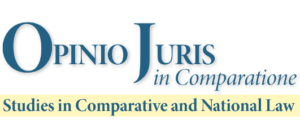CAUSATION, PROOFS AND SCIENCE: THE DARK SIDE OF NUMBERS
Authors: Bruno Tassone
ABSTRACT
A great number of modern studies on causation argue that it is not possible to build a theory which can be applied to any situation, up to the point of either: evoking different truths narrated by the characters of the well-known Akira Kurosawa movie “Rashomon” (Cendon); stating that “causality is a nail to which the judge can hang the hat he likes most” (Hart and Honoré); or just seeing it as a tool which permits the most “unscrupulous” legal policy operations (Alpa).
The problems of this legal category have been magnified since many jurisdictions have reverted to the “more likely than not” standard, which has brought them to consider causation established if the plaintiff succeeds to prove that it is more probable than not that the damage was caused by the defendant; and since they have acknowledged the so-called “loss of chance” doctrine, where a plaintiff can claim damages if he is simply being neglected the possibility of getting benefit or avoiding harm with the probabilities of these happenings higher than 50%.
The just outlined scenario turns to important legal and interdisciplinary questions, such as, whether there might be a possibility of establishing causation and/or imposing a compensation for the “loss of chance” relying on statistics, epidemiological and other scientific studies. In more general terms, the paper confronts the question whether these studies can provide a solution to the legal “innumeracy” that erode many judgments and foster bias (that often leads to an erroneous view that if the defendant is black and poor, he is more likely to steal). In this context, we turn to another question: of whether we should carry out trial by mathematics – as suggested by a well-known article (Tribe) – and whether we should allow it to become the foundation for determining the evidence; or whether this approach will inevitably take us into the past, to the judicial standards of the Middle Age proceedings (where it took several lower class witnesses to rebut the statement made by just one testimony that belonged to an upper class). Thus, the paper considers not only the legal relationship between the cause and effect, but also whether we are facing the future where the assessment of evidence shall be entrusted to computers and Artificial Intelligence.
Keywords: Torts – Liability – Medical Malpractice – Negligence – Causation – But-For Test – More Likely Than Not – Preponderance of the Evidence – Compensation – Indemnification – Damage – Loss of Chance – Probability – Scientific Evidence – Statistics – Epidemiology – Civil Law – Common Law – Comparison – Policy

